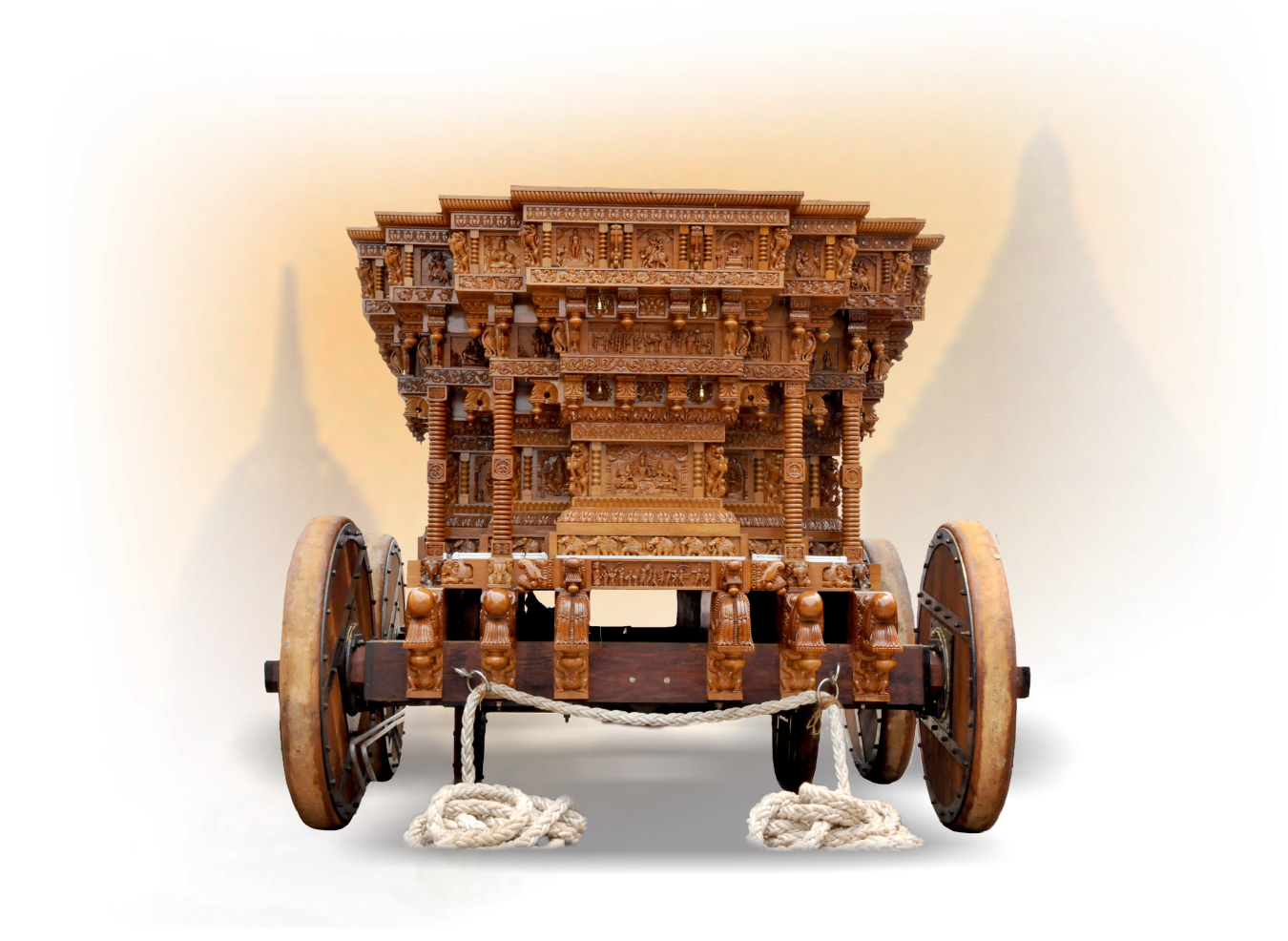
Writing the history of chariot sculpting is a huge task and it ranges from maestros to anonymous sculptures. Though the sculptor’s role ends with the sculpting of a chariot, he gets recognized through that chariot. Mastering Arsha, Agama, and Vasthu shastras to represent the sculptor God Vishwakarma in itself is a great achievement. This creative strength being utilized for spiritual means is a commendable service to the almighty and humanity.
Chariot sculptors are descendants of Vishwakarma, the divine sculptor. Chariot making is their religion; carpentry is worship to them.
A chariot can be a decorative vehicle, a cart, a part of the army (chaturanga sena). Dictionary says it is a big number with 29 digits. Rathakara - Chariot maker who creates the chariot, Sarathi is the driver of the chariot, Rathanga is the wheel, Ratha nemi is the outer periphery of the chariot, Rathya – are the horses attached to the chariot, Rathye – chariot way, Rathika – one who is sitting in the chariot, Rathini- a group of chariots, Ratha sapthami – worship of Sun God on Marga Shuddha Sapthami. Rathothsava is the car festival, where the God is worshiped on a chariot.
When we hear the word Ratha, the immediate connection that comes to our mind are the car festivals that take place annually in our region. With that, the various types of chariots that are explained in ancient mythologies and history. Philosophically, it is the Chariot that was used to preach Bhagavadgitha – a chariot that resembles the time wheel.
